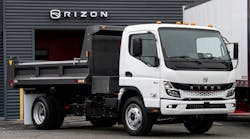A recent report from Navigant Research analyzes the market for natural gas vehicles (NGVs), including global forecasts, broken down by vehicle segment, alternative drivetrain, and region, through 2025.
In the past decade, increased hydraulic fracturing extraction and improvements in infrastructure and technology have increased the supply and decreased the cost of natural gas, according to Navigant. The market for NGVs hit an obstacle due to global gas prices, but is still expected to grow gradually through 2025, Navigant added.
“Various regional factors such as availability of refueling infrastructure, tailpipe emissions requirements, and the cost of natural gas affect the markets for light duty NGVs,” says Sam Abuelsamid, senior research analyst with Navigant Research. “In Western Europe and Asia Pacific, NGV growth is expected to continue, just at a lower rate than previously projected.”
According to the report, increased scrutiny of real-world emissions and fuel consumption from internal combustion engine (ICE) vehicles, including NGVs, will put additional pressure on manufacturers. These factors, in addition to low gas prices and minimal infrastructure, are expected to result in more modest NGV growth than previously forecast.
The report, Natural Gas Vehicles, examines the global market for NGVs, with a focus on passenger cars, light duty trucks and vans, medium/heavy duty trucks and buses, and commercial vehicles. The study provides an analysis of the key factors expected to influence demand for NGVs, including fuel prices, infrastructure availability, regulations, and technical issues. Global market forecasts, broken down by vehicle segment, alternative drivetrain, and region, extend through 2025.
The study also analyzes how market and technology issues will affect automobile and truck manufacturers; suppliers of natural gas (NG) engines, fuel storage, and delivery hardware; and the companies that convert liquid-fueled vehicles to NG.


